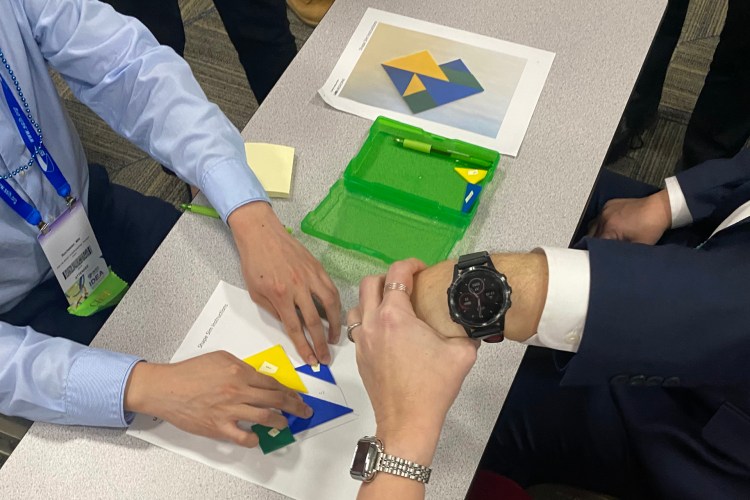Clinical Simulation hosts workshop on global stage

2024 may have just started, but UAB Clinical Simulation has already made a global simpact.
This past January, select members of the UAB Clinical Simulation team attended the 24th annual International Meeting on Simulation in Healthcare (IMSH) in San Diego, Calif., where they presented an interactive workshop on Rapid Cycle Deliberate Practice (RCDP) for an international audience using tangrams and Legos.
RCDP is a high-energy, engaging methodology that builds on repeated opportunities and requires a coordinated team approach for deployment. During RCDP, learners rapidly cycle between deliberate practice and directed feedback until they’ve effectively mastered the subject—in this case, RCDP itself.
The workshop provided participants with a brief didactic and significant hands-on practice, allowing them the opportunity to practice the different roles required to support the use of RCDP and design a sim involving tangrams or Legos, before piloting it on their peers.
“We wanted learners to see that RCDP could be used for any known or mutually agreed upon process,” said Andres Viles, director of immersive simulation, who helped facilitate the workshop. “For me, modeling what learners are expected to do is important, and that was the intent of the demo/simulation. Subsequently, having them work through the process with coaching from our team of experts reinforced best practices in simulation facilitation.”
Ideally, the participants will take the lessons learned in San Diego back to their own institutions, be they stateside or overseas. UAB Clinical Simulation has already received multiple requests from individuals asking for help with their future courses.
Hosted by the Society for Simulation in Healthcare, the IMSH is a scientific conference that explores the latest innovations and best practices in health-care simulation, providing the tools and resources health-care professionals need to advance their skills, impact change in delivery systems and practice and, ultimately, improve patient safety. The most recent installation saw more than 4,000 simulationists in attendance.
“The conference offered us the opportunity to showcase the great work we do, while learning about new trends in our industry and staying abreast of best practices,” Viles added. “Not only were we able to network and build a stronger community of practice, but we were also able to engage in the advancement of simulation as a profession.”
To learn how UAB Clinical Simulation can simpact your team, visit here.




0 Comments